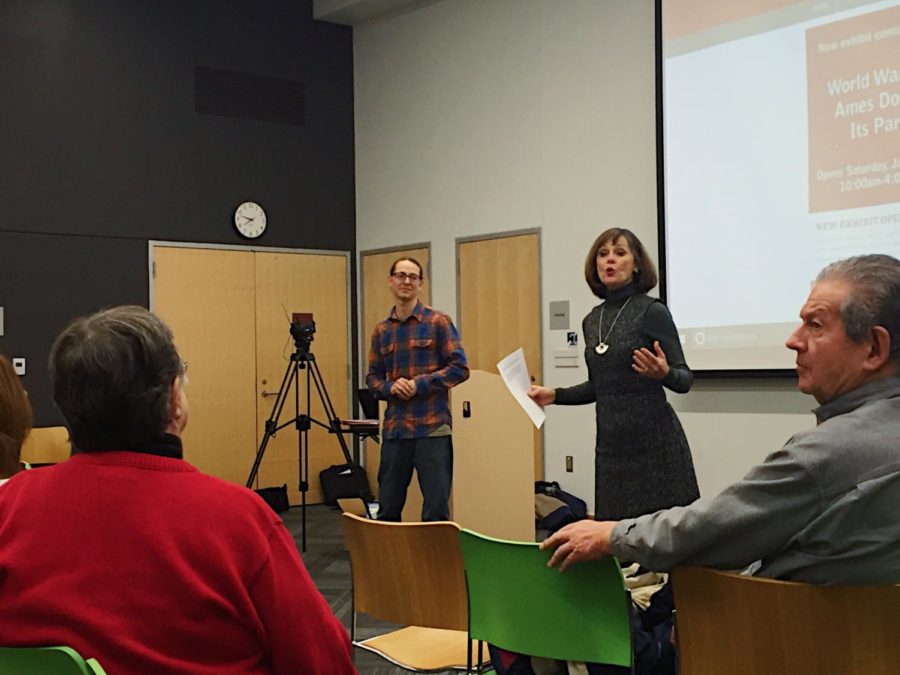“Shared Stories” gives insight to Ames’ past
Alex Fajfar and Teresa Larson answer questions about “Shared Stories,” an on-going project through the Ames Historical Center Jan. 9.
January 9, 2017
The Ames Historical Society is bringing about new ways to look at history and stories from Ames’ past.
The Story County Genealogical Society and members of the community got to hear from guest speakers Teresa Larson, retired broadcaster for central Iowa, and Alex Fajfar, Iowa State history graduate, about an on-going project from the Ames History Center called “Shared Stories.”
“Shared Stories” interviews members of the Ames community who lived and worked during the 1930s and 1940s and puts the audio and video onto DVDs for the public to use for their own enjoyment or studies.
The center also tries to incorporate photos provided by the interviewees to add some context to the stories.
“Video brings stories to life and brings you to a specific time and place,” Fajfar said, showing an example video of people at a public swimming pool from around the 1950s. “It’s interesting to see people playing at the pool rather than a grainy photo of one.”
The recorded conversations are transcribed word for word by volunteers at the Ames Historical Society and catalogued with the DVDs so viewers can follow along as they watch.
Ted Tedesco, former mayor of Ames who had a variety of stories that depicted what Ames was like throughout his lifetime, was one of the interviewees.
“People talk in a very sensual way,” Larson said. “Not only what [Ames] looked like but what they heard or smelled, like the old corn canning factory. Newspapers don’t say things like that.”
Larson and Fajfar also showed part of an interview with Jamie Amemiya, who talked more about the darker side of the 1940s. She spoke about how Asian, in particular Japanese people, were treated during World War II and the installment of internment camps.
“They stopped anyone with an Asian face, so Chinese Americans had started to wear buttons that said ‘I am Chinese’ on them to avoid persecution,” Amemiya said in her “Shared Stories” video. “People also don’t realize that the camps were made for Germans and Italians too. Pretty much anyone the U.S. was against.”
Fajfar and Larson also talked with the Story County Genealogical Society about how the videos can help further their research on their own family histories and genealogies, and let them suggest people who should be interviewed for the project.
“Oral history, by definition, is one human being’s reaction to events,” Larson said. “So everyone has a different story.”
Fajfar encouraged the audience to create their own videos and keep them on file to share with their families.
Larson also noted that if anyone makes a historical inaccuracy in one of the Shared Stories, the Ames Historical Society will still transcribe the interview as is but will make noted corrections along the way if necessary.
If anyone is interested in viewing any of the Shared Stories, they can visit the Ames History Center at 416 Douglas Ave. in Ames.
If anyone would like to hear more about the Story County Genealogical Society, their email is [email protected].
















